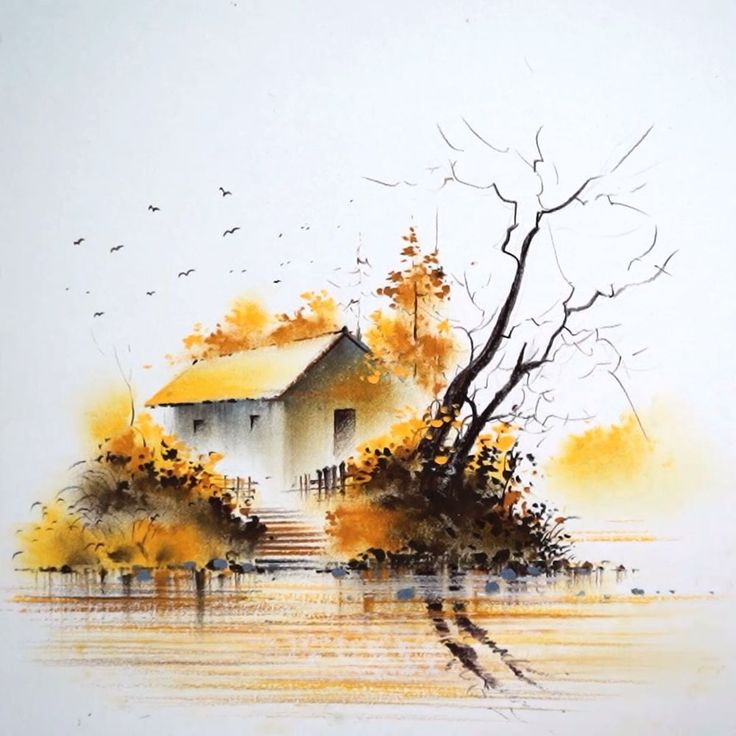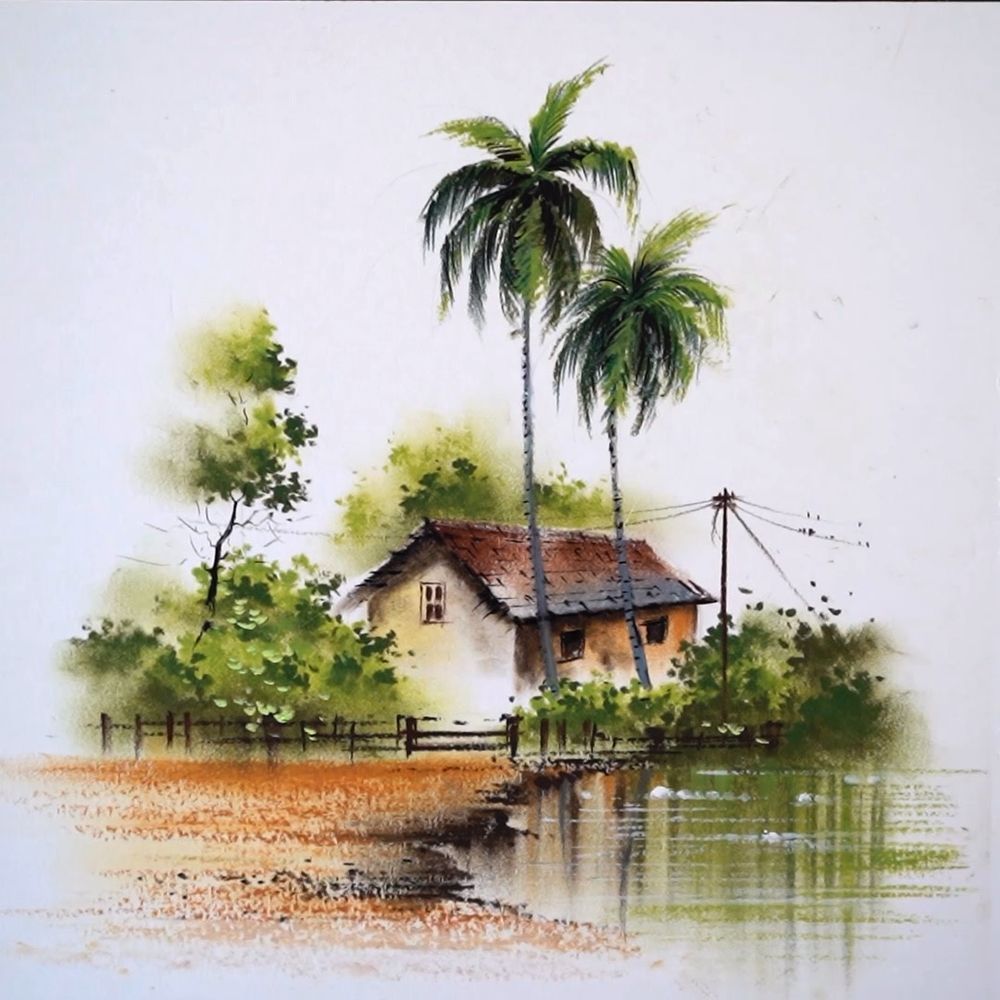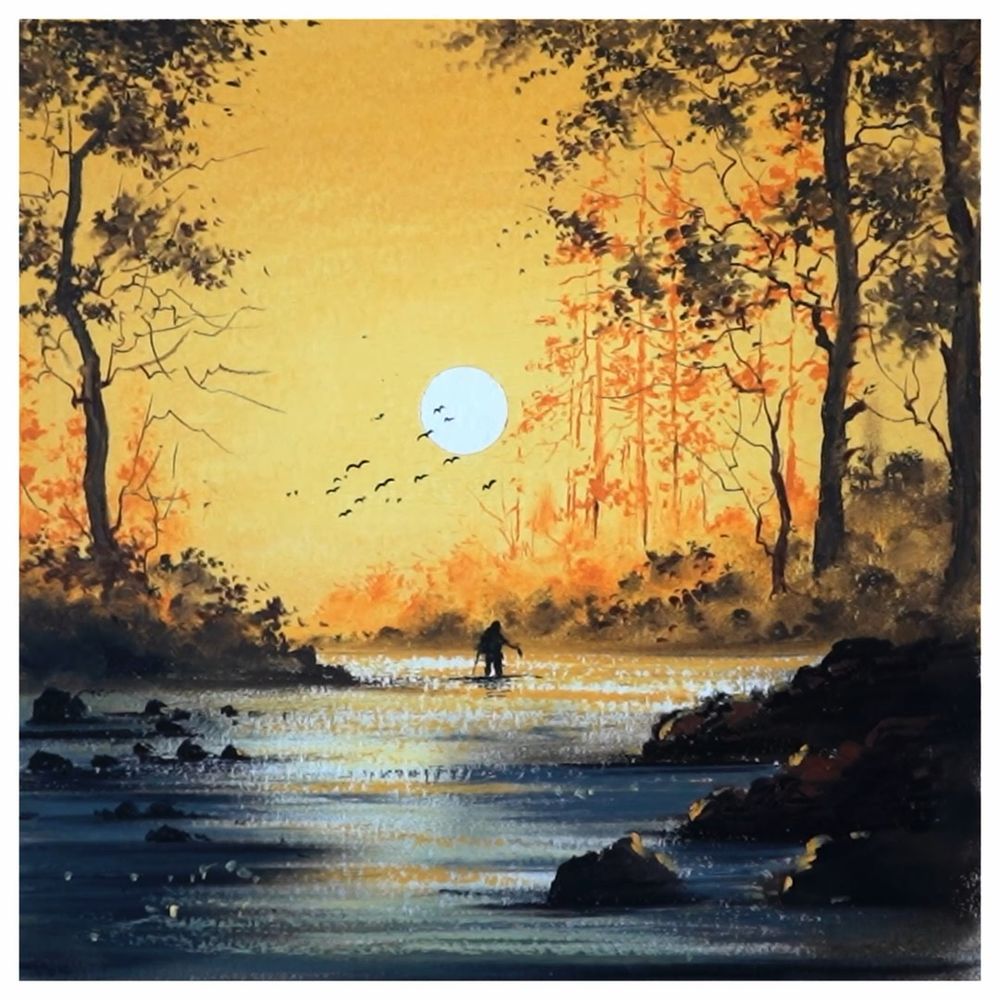Introduction to Oil Pastels
Oil pastels are vibrant art mediums full of potential. Artists love their bold colors and ease of use. They’re unique because they blend wax with non-drying oils, like linseed. This combo gives oil pastels a creamy texture and intense hue. Oil pastels stand out for being very versatile. Whether you’re a beginner or a seasoned artist, they offer a fresh way to express creativity.
Oil pastels are great for fast work. You can draw with them quickly, making them perfect for capturing the moment. Plus, they’re portable. You can take them outdoors to sketch wherever you go. With these pastels, you can go from a light touch to rich layers. They don’t need water, which makes setup and cleanup simple. Unlike traditional paint, there’s no drying time.
To start painting with oil pastels, first pick your colors. Be strategic, because you can’t mix them like paint. Layering and blending are key. You can mix colors right on your artwork. Use tools like blending stumps or your fingers for different effects. As you get more experienced, you can add textures. Scratch into the pastel with a knife or end of a brush for sharp details.
For those new to oil pastels, they can be easier to manage than paints. It’s okay to make mistakes. Since they’re smudge-able, you can adjust as you go. Dark colors can go over light ones, but not the other way around. When you finish, use a fixative spray to protect your drawing.
In the upcoming sections, we’ll dive deeper into the world of oil pastels. We’ll look at their history, techniques for beginners, blending, and the best supplies. Get ready to unlock the vibrant potential of oil pastels in your art.

Historical Development of Oil Pastels
Oil pastels have a rather recent history in art. Created in the early 20th century, they provided an alternative medium for artists. Originally designed for children’s use in Japan, they advanced into a tool for serious artists. Notably, Pablo Picasso influenced their evolution. He worked with the French company Sennelier in the 1940s. Together, they improved oil pastels, making them suitable for professional work. Today, they are widely used and appreciated for their rich textures and vibrant colors.
Picasso and the Evolution of Oil Pastels
Picasso’s collaboration with Sennelier was crucial. It resulted in artist-grade oil pastels that many use globally. Their work birthed a new form of expression for artists. This partnership is a key chapter in the history of oil pastels. It shows how influential artists can impact the development of art materials. Picasso’s legacy in oil pastels endures through the products we use today.
Advantages of Oil Pastels in Art
Oil pastels offer unique benefits to artists. Their bold colors and creamy texture make art pop. They’re easy to use, making them great for artists at any level. Beginners find them friendly, while experts appreciate their versatility.
Oil pastels do not require drying time like oil paints. This means artists can quickly layer and adjust their work. They’re portable, allowing for art creation anywhere. No water or brushes are needed, which simplifies the process.
The possibility to blend colors directly on the artwork is another advantage. Artists can mix shades right on the canvas, creating unique hues and effects.
Oil pastels are fantastic for outdoor sketching due to their portability. Their ease of use is ideal for capturing scenes on the go.
Finally, oil pastels work on various surfaces. They can be used on paper, canvas, or even wood. This adaptability opens up countless creative possibilities.
In short, oil pastels are distinct, colorful, and flexible. They inspire creativity and bring convenience to the artistic process.

Fundamental Techniques for Beginners
For new artists, mastering a few basic techniques is essential for success with oil pastels.
Choosing the Right Colours
Picking colours is critical in painting with oil pastels. Start with a basic set. Choose colours that complement each other. Bright colours make art pop. Darker shades add depth and shadow.
Layering and Blending
Layering is adding one colour over another. Blending combines colours right on your artwork. Use your fingers or tools like blending stumps. Soft transitions create a sense of realism.
Working with Textures
Textures bring life to your art. Use different strokes for varied effects. Try sgraffito by scratching into pastels. This reveals lower layers and adds fine details.
Blending Oil Pastels
Blending is a pivotal skill in painting with oil pastels. It marries colors, creating transitions and textures that add depth to your artwork. This section explores the tools and methods to blend oil pastels effectively for beautiful results.
Various Tools for Blending
A range of tools can help you blend oil pastels smoothly. Here are some common ones:
- Your fingers: They’re a direct way to merge colors, but keep them clean to avoid smudges.
- Blending stumps: These paper sticks offer precise control, ideal for soft transitions.
- Foam pieces: Surprisingly effective, foam can smoothly spread pastel pigments.
- Paint brushes: With a bit of oil paint thinner, brushes can soften and stretch colors.
Remember, less is more when blending oil pastels. Too much mixing can make colors muddy.
Techniques to Achieve Desired Effects
For harmonious blends and vibrant outcomes, follow these techniques:
- Layer lightly: Start with a gentle touch, adding layers as needed.
- Mix carefully: Plan color combinations to avoid dull mixes.
- Scumble over: Create texture by loosely overlaying colors without full blending.
- Clean layers: Wipe your tools often to keep the hues clean and distinct.
Mixing dark over light works well. If you add too much, clean your area and try again. Stay patient and let layers meld slowly.
Creative Tips for Oil Pastel Drawing
Oil pastel drawing is an exciting adventure. Use these creative tips to make your art more striking.
Keeping Your Pastels Clean
Keep pastels bright and clean for best results. Dirty pastels can ruin your colors. Clean them by rubbing onto scrap paper. This way, your art stays vibrant and clear.
Building Up Layers in Your Art
Start with light colors and then add darker ones. Light colors are your background. Add layers slowly to build depth. This adds richness to your drawing. Don’t rush. Take time to see how colors mix on paper.
Adding Details with Sgraffito
Use a sharp tool to scratch into your pastel layers. This shows colors underneath. It’s called ‘sgraffito’. This technique gives fine lines and texture to your work. It’s great for details like hair or grass.

Essential Supplies for Oil Pastel Artists
Having the right tools can make a big difference when painting with oil pastels. Quality pastels, paper, and other tools can help you achieve the vivid and dynamic effects you want in your artwork. Below, we discuss some essential supplies you should consider to make the most out of your oil pastel projects.
Best Oil Pastels for Quality and Vibrancy
For the best results, invest in high-quality oil pastels. Artist-grade oil pastels have more pigment and less wax, giving richer color and better blending capabilities. Look for reputable brands like Sennelier, which is known for its luxurious texture and varied color range. While budget brands may suit beginners, they often lack the vibrancy and layering potential of their higher-end counterparts.
Recommended Paper Types
Paper choice is crucial as it affects the final outcome of your art. Textured or heavier papers like watercolor paper can hold pastel better and allow for more layering without tearing. Toned papers can bring out the brightness of pastel colors. Brands such as Strathmore offer ranges well-suited for oil pastel use.
Additional Tools for Refined Drawing
While your fingers can be used for blending, other tools offer more control and keep your artwork clean. Blending stumps, paper towers, and even pipe insulation foam are options for smooth blends. Using a fixative spray will protect your finished piece from smudging. Remember to clean your tools often to keep your colors pure. For blending with thinners, opt for a non-toxic option like Zest It. High-quality synthetic brushes are also recommended for smooth application.
Step-by-Step Guide to Applying Oil Pastel
As an emerging yet vibrant medium, mastering oil pastel requires understanding its process. Let’s walk through a step-by-step guide for applying oil pastel creatively and effectively.
Preparing the Surface
Before you start, choose the right surface. It affects how well your pastels perform. Heavier papers like watercolor paper work well. They can support more layers. Toned papers show pastel colors brighter. Make sure your surface is clean and flat. A good foundation is key to better artwork.
The Process of Melting Oil Pastels
Start with a light sketch to outline your artwork. This guides where to add color. Apply a base layer of color using gentle strokes. Begin with light colors then move to darker ones. Mix colors directly on the surface. Use rubbing or blending with tools for smooth transitions. Don’t add too much pastel at once. Build your layers gradually. Enjoy the process and watch your art come to life.
Finalizing and Protecting Your Artwork
Once you’re satisfied, it’s time to preserve your piece. Use a fixative spray to keep it from smudging. This also lets you add more layers on top if needed. Make sure your art is dry before you apply the spray. It protects and finalizes your artwork. With your piece secured, it’s ready for display or storage.
Advancing Your Skills with Oil Pastels
As you grow with oil pastels, exploring new techniques can enhance your art. These can include more complex layering or introducing new textures with unusual tools. Push the boundaries of what you can do with oil pastels.
Experimenting with Advanced Techniques
Advanced techniques take your art to the next level. Try layering thin glazes of oil pastel for subtle color changes. Use a palette knife for sharp lines or to scrape away layers. This reveals bursts of underlying colors. Mix in different textures, like fabric patterns or sand, for a tactile feel. Each new approach can give your work a unique signature.
Exploring Mixing Mediums and Surfaces
Different surfaces can affect the look of your pastels. Try pastels on canvas or wood for a change. They give a different texture than paper. You can also mix mediums. Apply a base of ink or acrylic and add oil pastel highlights. Or, use turpentine or baby oil to thin and spread pastel for a paint-like effect. Always experiment in a safe area before applying new methods to your main artwork.